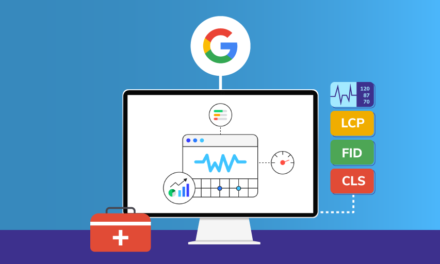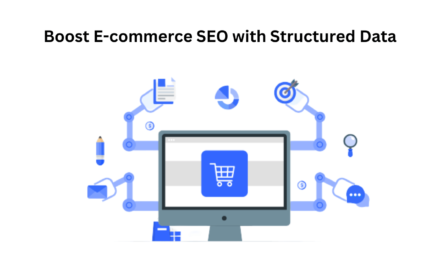Interested in getting to know your website visitors a bit better?
Understanding what your visitors are after allows you to provide precisely what they need. This not only helps in creating more helpful content but also enhances the overall website experience, offers the right products, and much more.
Let’s take a stroll through this article, where we’ll explore how to grasp the intent of visitors on your WordPress website and share some nifty tips along the way.
What’s Website Visitor Intent, Anyway?
Website visitor intent is simply what a user is trying to achieve or find on your WordPress website, or why they clicked on your site in search results in the first place. Breaking down visitor or user intent into four types can give us a clearer picture:
1. Navigational: Users seeking your brand name or looking for specific links, like a contact form.
2. Informational: Those in the research phase, seeking information about a product or service.
3. Commercial: Users comparing different products or services.
4. Transactional: Visitors ready to make a purchase.
Why Should You Care About Understanding WordPress Website Visitor Intent?
Understanding visitor intent is akin to mind-reading for website owners and marketers. It unveils valuable information that can fuel your business growth.
For blogs, knowing what content visitors enjoy lets you tailor your material to their preferences, boosting website traffic. On WooCommerce sites, understanding visitor intent helps cater to customer needs, leading to more conversions.
This knowledge is a game-changer for enhancing the overall website experience. By tracking user paths and fixing issues, such as streamlining the checkout process or improving article navigation, you can provide a more user-friendly environment.
Ways to Uncover Website Visitor Intent

1. Ask Users for Quick Feedback:
Connecting with your audience is a breeze when you simply ask for their thoughts. Drop them a line and discover what they’re seeking on your website and what might be bugging them. Let’s say you’re running an online store—throwing out surveys can unveil the real deal. What are buyers on the hunt for? Where’s the sweet spot in their purchase satisfaction? But it’s not just for the sellers. Even your articles and landing pages crave a bit of attention. Gathering feedback helps you decode whether your content hits the mark. Give it a tweak here and there to align with what your audience is truly after. Here’s the kicker- Imagine a user dropping by for a dose of information about your service. If you spring a transactional article on them, chances are they might not be all smiles. Matching content with the right intent keeps them happily exploring, not bouncing.
2. Add Interactive Polls:
Here’s a nifty trick to swiftly get a grip on what your website visitors are up to—throw in some interactive polls!
Unlike surveys that can be a bit all over the place, polls are like a laser focus. Toss in a variety of options, maybe a rating scale or a straightforward yes/no query. The winning option in the votes can spill the beans on why folks are hanging out on your website. Once you’ve cracked the code on why they’re here, you can group them into different squads, making it a breeze to fire off personalized push notifications, rollout tailor-made campaigns, and dish out content that’s right up their alley!
3. Track User Journey with Forms:
Ever wondered how folks deal with the forms on your website? Well, it’s a bit like peeking behind the curtain to understand their game plan! Forms are where you and your users get to have a chit-chat. They spill their thoughts, sort out queries, splash some cash online, toss in files, join the squad as leads, and sign up for the juiciest newsletters—all the good stuff!
But here’s the twist: not everyone’s a form-fillin’ maestro. Some tap away, others ignore it. Now, you have to track the moves folks make before hitting that submit button. This will uncover the secret sauce that gets them scribbling on those forms. Armed with this intel on what makes them tick, you can whip up forms that snag more leads, turbocharge your biz growth, and even dodge the dreaded form abandonment blues.
4. Customer Journey Tracking on eCommerce Stores:
Ever thought of peeking into the secret scrolls of your eCommerce store visitors? Well, buckle up, because it’s time for a journey—a customer journey, to be precise! Customer journey tracking unveils a treasure trove of insights. You get to spy on the pages your visitors stroll through, how long they linger, and the journey they embark on before hitting that “Purchase” button.
What’s the deal, you ask? Well, it’s your ticket to unveiling why some products make it to the cart while others hang in the shadows. Armed with this intel, you can amp up your sales funnel, sprinkle some optimization and conjure more conversions. This also spills the beans on how users set sail across your website seas. With this insider info, you can decode the navigational intent of your users.
5. Observe User Interactions:
Ever wondered how your website visitors go through on your site? Watch closely as they tap, click, and waltz around—check out the hotspots they can’t resist clicking, their favourite hangout spots (aka most-visited pages), the files that make it into their digital backpacks, the videos they binge-watch, and more. Use these insights to your advantage later.
6. Analyze Search Terms:
Got a search feature on your website? Well, buckle up because that search bar isn’t just for show—it’s a mine for understanding what folks are after. Dive into the search terms people type to uncover what products, services, and content they’re on the lookout for. Customize search engines and algorithms to tailor the search process. Understand what users seek on your website through search queries.
7. Use SEO Tools for Keyword Intent:
Beyond just tracking searches on your site, there’s a whole world of keywords out there people are typing into search engines to discover the digital kingdom. Understanding the intent behind those search keywords is your trusty compass. Navigate through the free Google Search Console to unveil the keywords your site is aiming for. Use any keyword research tool and throw in a keyword. You can see a spectrum of variations and more importantly, the intent behind each search term. Is it an informational quest, seeking answers to life’s questions? Or perhaps a transactional journey, destined for product or service acquisition?

With this knowledge, you have the power to craft content that resonates, soaring to new heights on Google’s ranking ladder. Better yet, you become the curator of user satisfaction, guiding your visitors through a conversion-friendly journey.
Understanding website visitor intent isn’t a crystal ball, but with these strategies and tools, you can get pretty close. So, go ahead, unravel the mysteries of your visitors’ intentions, and let your website thrive!





